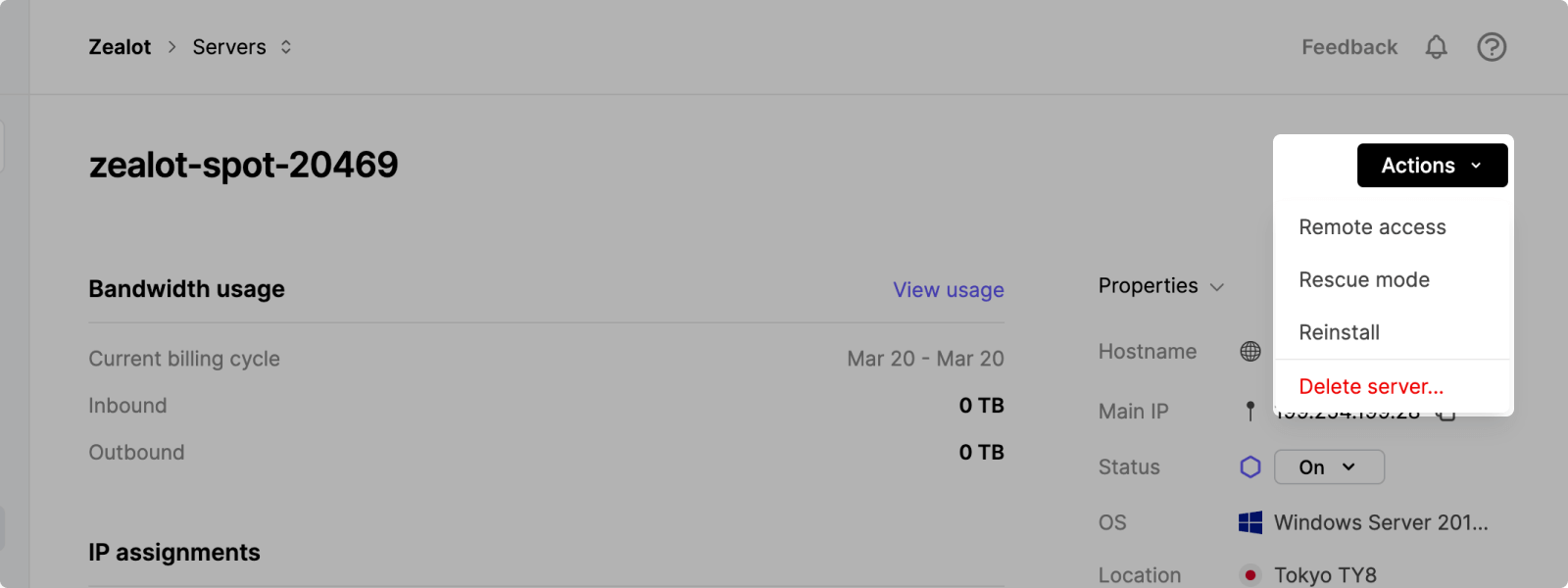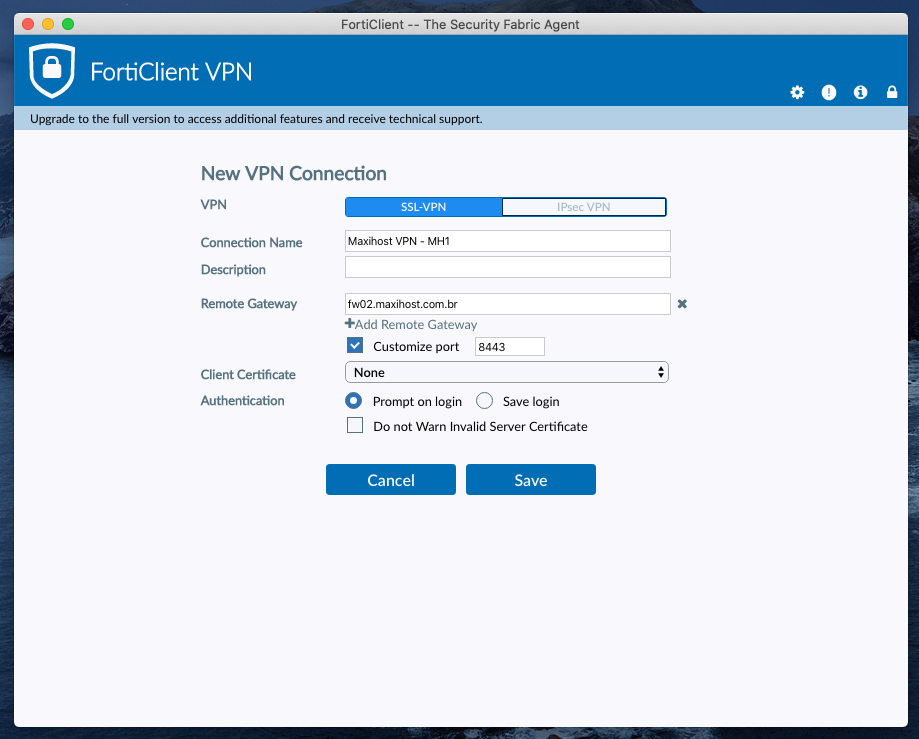Remote access
All of Latitude.sh's servers feature Intelligent Platform Management Interface (IPMI) so your server can be managed remotely. You can access your server's IPMI through the browser or CLI. Remote access allows you to manage your server even when it's off or unresponsive.
Remote Access is included at no cost.
One second before you scroll
To connect to Latitude.sh's internal network, you must download a Fortinet-compatible VPN client.
- Windows and Linux: Download Fortinet's VPN client
- Mac and Linux: You can use Fortinet's client, but we recommend using the openfortivpn CLI for a better experience. If you have issues with
openfortivpn, head to Troubleshooting openfortivpn
Connecting to the VPN
The first step is to connect to our internal network via VPN. This is needed because IPMI runs on private IPs.
- On the Servers page, select the server you'd like to access, click on Actions and select Remote access.

Server actions on the Latitude.sh dashboard.
- Click on Create VPN session to get credentials for the VPN. Note that the password is only shown once. Every time you create a new VPN session the password will change.

VPN credentials section on the Latitude.sh dashboard.
- Use the credentials provided to connect to our network using the VPN client you downloaded.

FortiClient VPN used to connect to a server's IPMI.
- Save the connection, insert the username and password provided and click on Connect.
Connecting to the IPMI
Now that you have established a VPN tunnel between your computer and Latitude.sh's internal network, you're ready to connect to the IPMI.
- On Step 2 in the Remote Access page, click on Retrieve IPMI credentials. This will give you the private IP, username, and password for your server's IPMI.
- Copy the username and password and paste the IP Address on your browser window.

VPN and IPMI credentials on the Latitude.sh dashboard.
- On the IPMI login screen, insert the username and password provided.
The IPMI password is only shown once, so you'll have to get the credentials again if you decide to access your server in the future.
Troubleshooting
openfortivpn
| Error | Cause | Fix |
|---|---|---|
| Sorry, try again | Bad username or password | Make sure you're using the correct username and password as shown in the dashboard. Passwords are ephemeral. |
| Sorry, try again | Issues with background service (daemon) | Restart daemon:sudo launchctl stop openfortivpn && sudo launchctl start openfortivpn |
| Gateway certificate validation failed | Connection refused due to lack of certificate. | Add the trusted-cert line to your configuration file or append it to the auth command. |
Updated 5 months ago
